Spokane Valley, WA Pollen and Allergy Report for Summer 2023
Pollen Allergy Trends in Spokane Valley, WA
When is pollen lowest in Spokane Valley, WA?

February
Lowest month total PPM
Avg. PPM
When is pollen highest in Spokane Valley, WA?

April
Highest month total PPM
Avg. PPM
How does pollen in Spokane Valley, WA compare to Washington?
Spokane Valley has a higher average PPM than the state of Washington.
Spokane Valley yearly avg PPM:
Washington yearly avg PPM:
How does pollen in Spokane Valley, WA compare to the USA?
Spokane Valley has a higher average PPM than the USA.
Spokane Valley yearly avg PPM:
USA yearly avg PPM:
Is pollen worse this year in Spokane Valley, WA?
Spring 2023 was worse than spring 2022.
Spring 2023 PPM:
Spring 2022 PPM:
Average PPM in Spokane Valley, WA
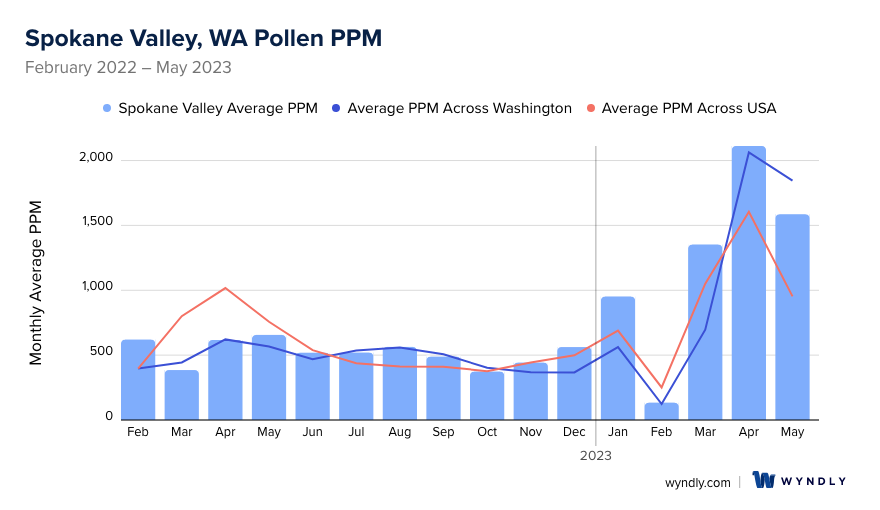
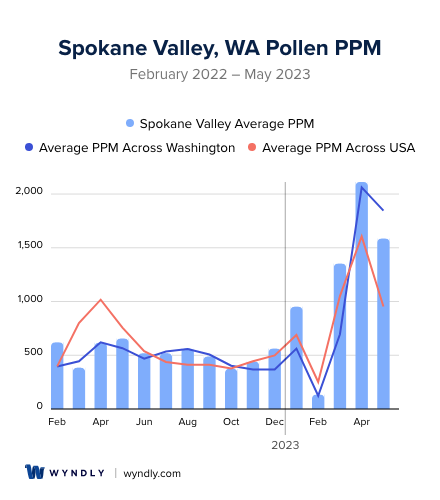
Spokane Valley, WA Pollen and Allergy Breakdown by Month
Grass
When is grass pollen highest in Spokane Valley, WA?
March has the highest grass pollen in Spokane Valley, WA with an average PPM of
When is grass pollen lowest in Spokane Valley, WA?
December has the lowest grass pollen in Spokane Valley, WA with an average PPM of
Tree
When is tree pollen highest in Spokane Valley, WA?
April has the highest tree pollen in Spokane Valley, WA with an average PPM of
When is tree pollen lowest in Spokane Valley, WA?
October has the lowest tree pollen in Spokane Valley, WA with an average PPM of
Weed
When is weed pollen highest in Spokane Valley, WA?
August has the highest weed pollen in Spokane Valley, WA with an average PPM of
When is weed pollen lowest in Spokane Valley, WA?
February has the lowest weed pollen in Spokane Valley, WA with an average PPM of
Spokane Valley, WA Pollen Monthly Breakdown by Pollen Type
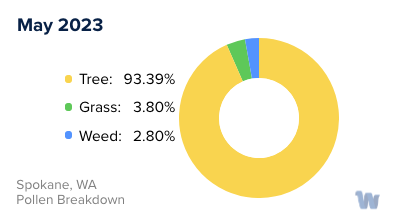
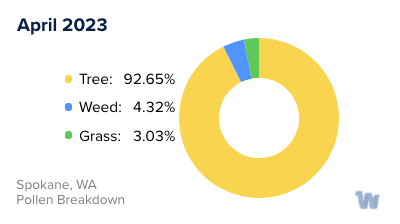
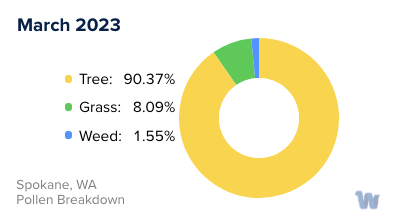
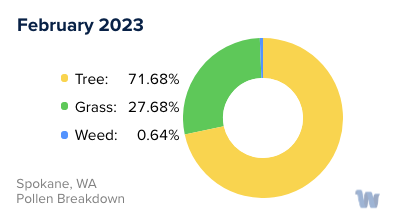
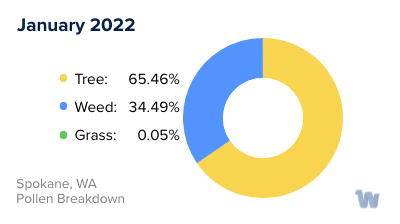
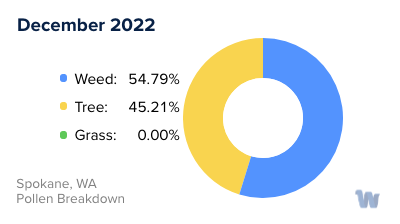
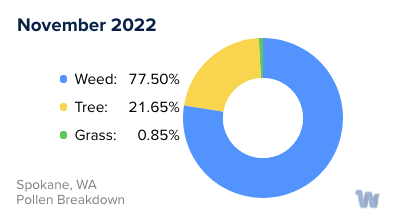
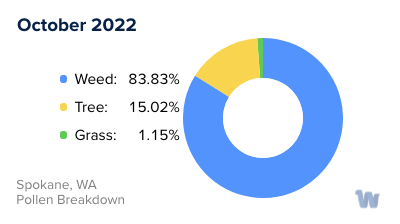
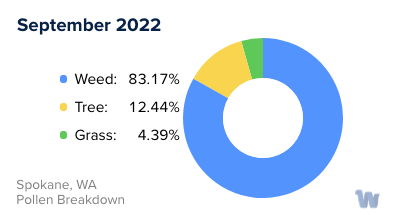
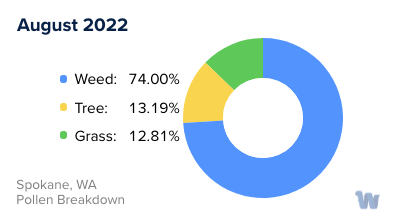
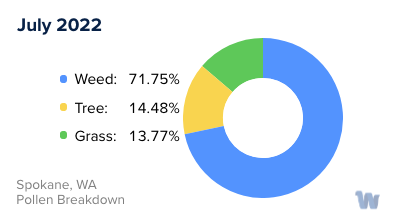
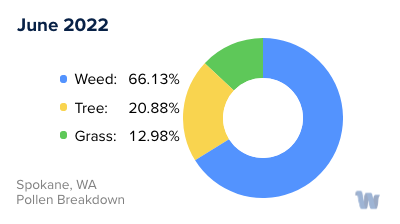
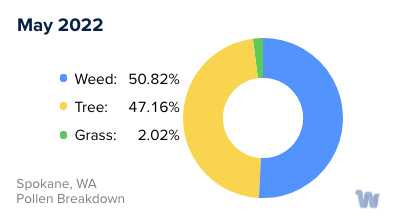
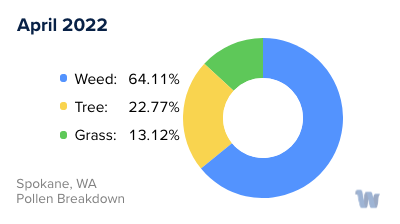
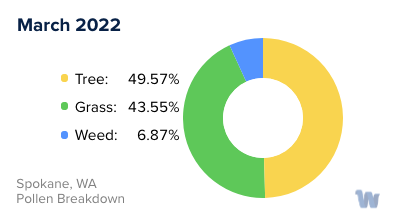
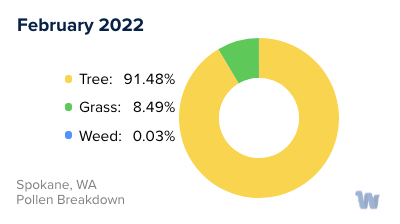
Pollen and Hay Fever in Spokane Valley, WA
Living in the picturesque Spokane Valley, Washington, one can be hard-pressed to avoid the natural beauty of the seasons. With each changing season, however, comes a fresh wave of pollen, an often unwelcome guest for those who are sensitive to it. Understanding pollen allergies, also known as hay fever, can help us appreciate the challenges some face while living in this beautiful region.
Pollen, an essential element of plant reproduction, comes from a variety of sources. In Spokane Valley, the most prevalent types of pollen come from trees, grasses, and weeds. Each type has its season, painting a year-round picture of allergy triggers.
Springtime in Spokane Valley brings a burst of tree pollen. Trees like oaks, cedars, and pines are some of the main culprits. These trees release vast quantities of pollen into the air, turning the season into a challenging period for allergy sufferers.
As spring eases into summer, the pollen baton is passed from trees to grasses. Grass pollen, especially from species like ryegrass and Timothy grass, is high during the warm, sun-drenched months. It's during this time that lush green lawns and open fields can become invisible adversaries to those with hay fever.
Fall ushers in the last wave of pollen, this time from weeds. Ragweed, sagebrush, and nettles are the primary sources, adding their microscopic particles to the autumn air. Their persistence even in cooler weather can prolong the hay fever season longer than one might expect.
Thus, each season in Spokane Valley comes with its unique pollen profile, shaping the yearly cycle of hay fever for its residents. While some may view this cycle as a necessary trade-off for living amidst such natural splendor, it's nevertheless essential to understand the pollen's sources and their seasons. It allows for better planning and preparedness, even if it's as simple as knowing when it might be wise to close the windows and enjoy the scenery from indoors.
In conclusion, Spokane Valley's changing seasons bring a diverse array of pollen types. This makes it a location of unique beauty but also a challenging environment for those with hay fever. Understanding these seasonal changes helps us appreciate both the challenges and the splendor of living in this remarkable corner of the world.

